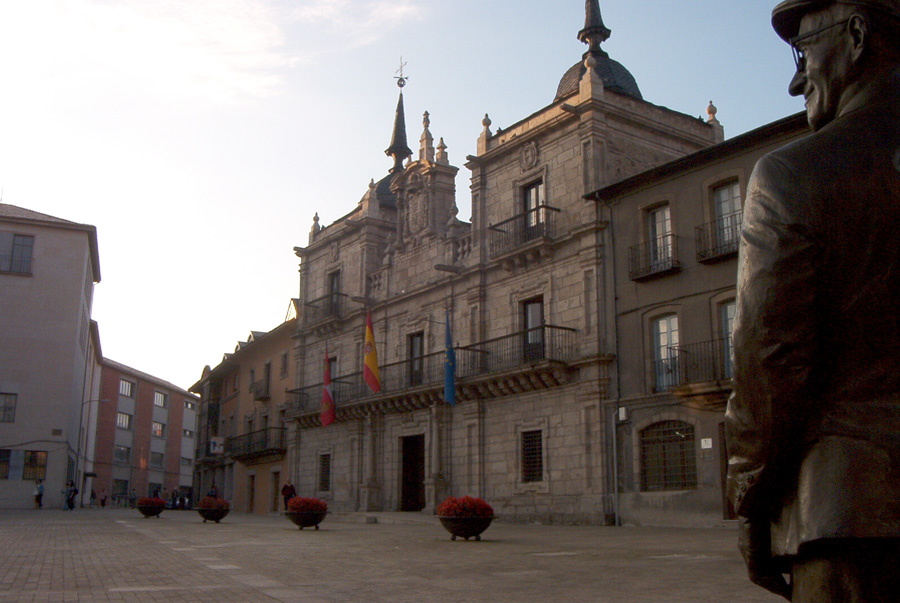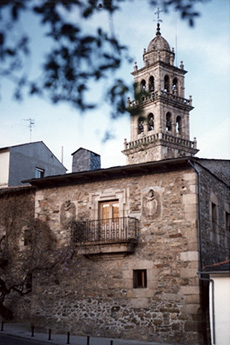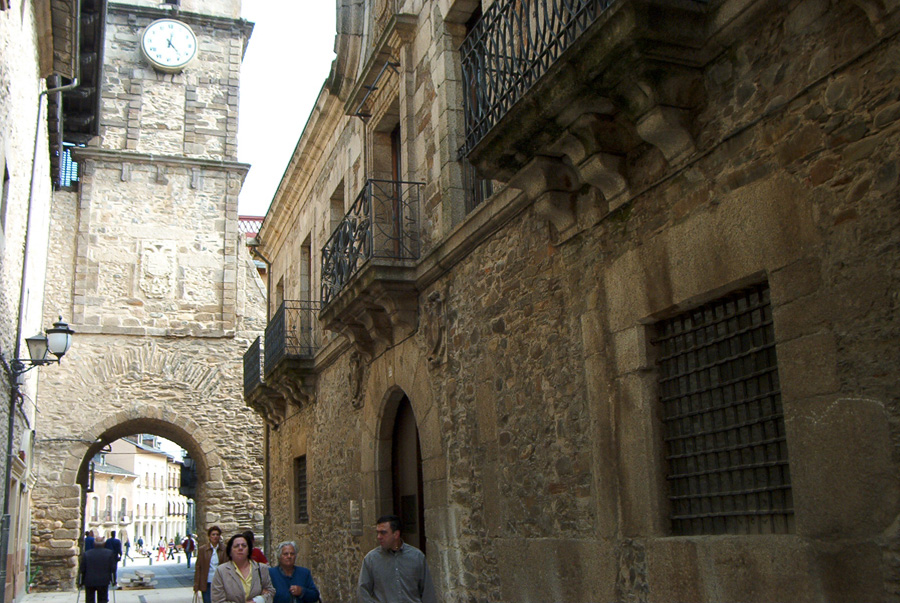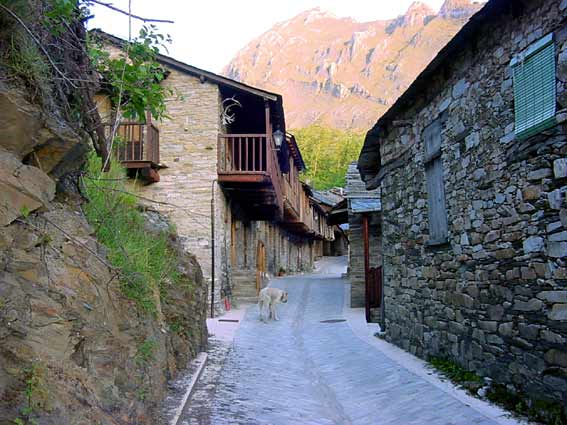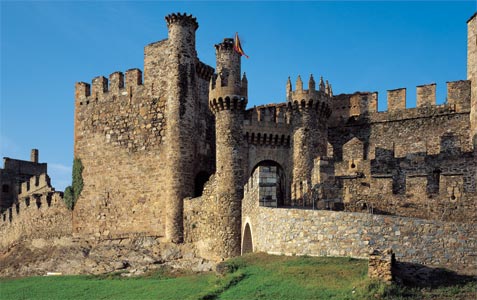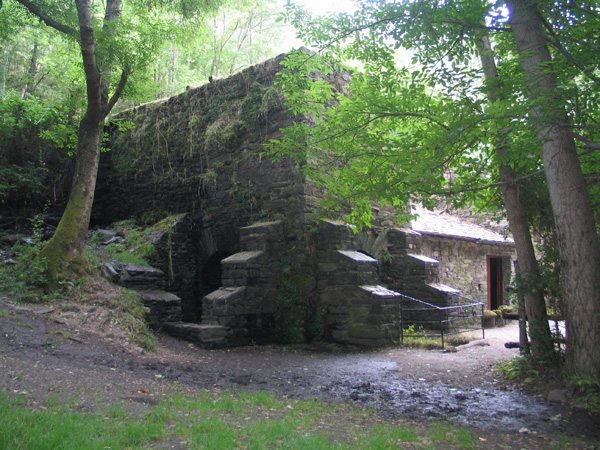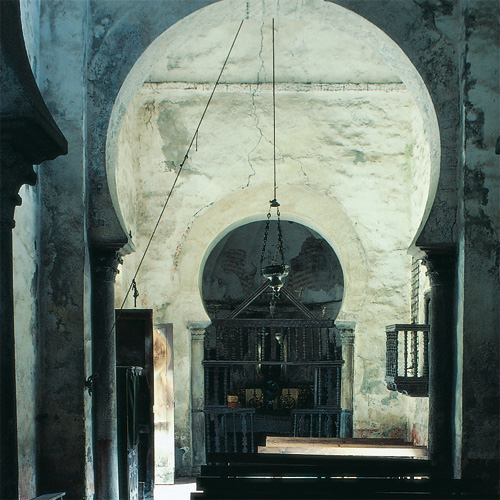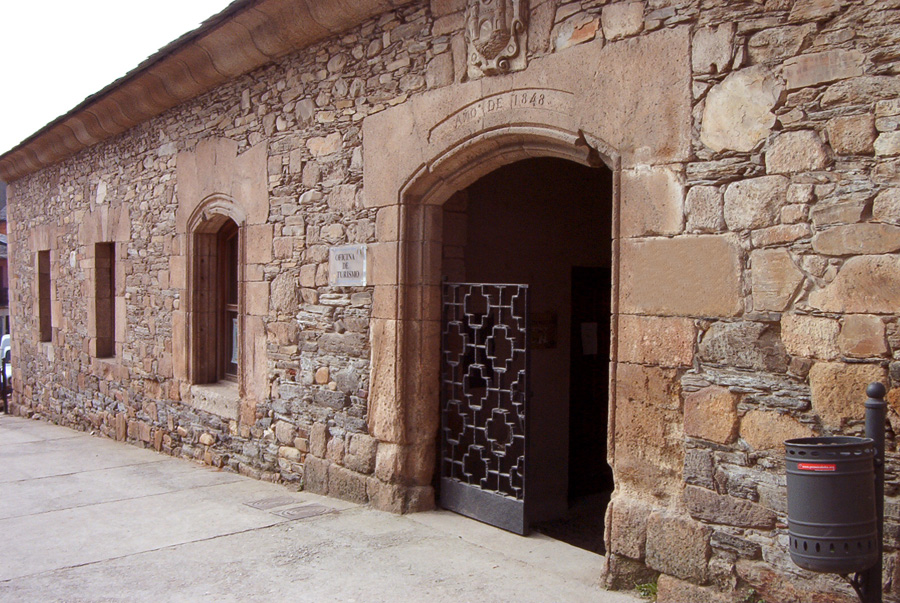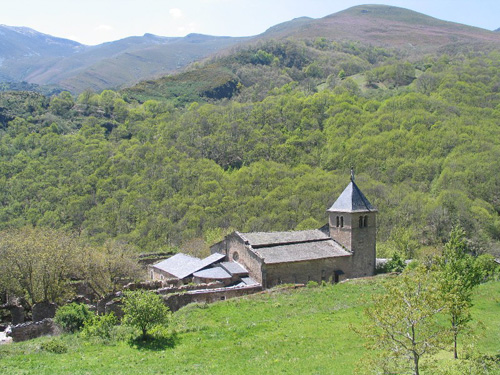PONFERRADA
The city of Ponferrada, capital of the region of "El Bierzo" are located 35 km from La Portela de Valcarce.
Its history begins before the Roman period, but when really the city reaches importance is from the eleventh century with the increase of pilgrimages to Santiago. In the year 1082 Bishop Osmundo orders to build a bridge over the Sil to facilitate his passage to the pilgrims. This bridge was built with iron railings so it was called Pons Ferrata (iron bridge) that over time would become the name of the future city: Ponferrada.
In 1178 the king Fernando Ferdinand II donates to the order of the Temple an old Roman fort destroyed by the Goths. The Templars rebuild the castle and remain in it until the dissolution of the order in 1312. The following years are of decline for the city that after passing through the hands of several nobles ends in those of the Count of Lemos, Don Pedro Álvarez Osorio . After his death happened in 1483 a fight by its inheritance takes place that took to the Catholic kings in 1486 to acquire the city for the crown. From then on it will be governed by a corregidor appointed by the king.
In the year 1908 Ponferrada is officially proclaimed city coinciding with the proclamation of the Virgen de la Encina as patroness of El Bierzo.
An important landmark in the history of Ponferrada is the arrival of the Railroad in 1882, which together with the construction of several major roads that cross it a few years earlier make the city an important nucleus that dominates the area. But the most important fact in recent history of Ponferrada is the installation in 1908 of the MSP, the Miner Siderúrgica de Ponferrada, which became the most important private mining company in the country. From here the city begins to grow in surface and in population: from the 3,000 inhabitants of 1918 it is passed to the 5,000 existing ones in 1920. Later it appears Endesa with the construction of the thermal power station of Compostilla I, and settlement of Metallurgical companies during the central decades of the century made Ponferrada a very important industrial and economic center.
In the last years Ponferrada is undergoing a new evolution enlarging its surface "eating" the more distant districts of the city, and increasing population until near the current 70,000 inhabitants





